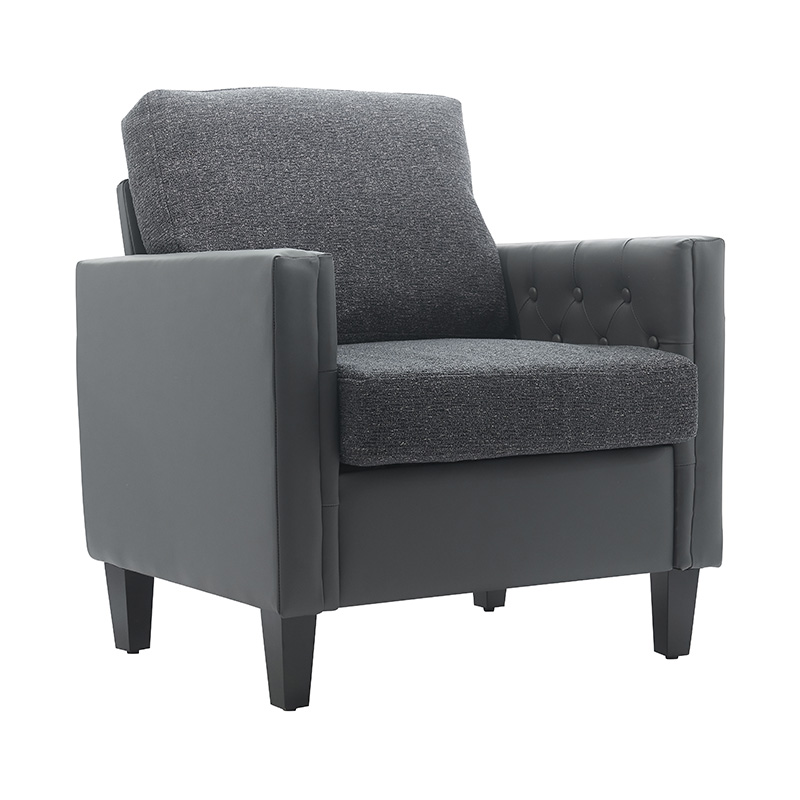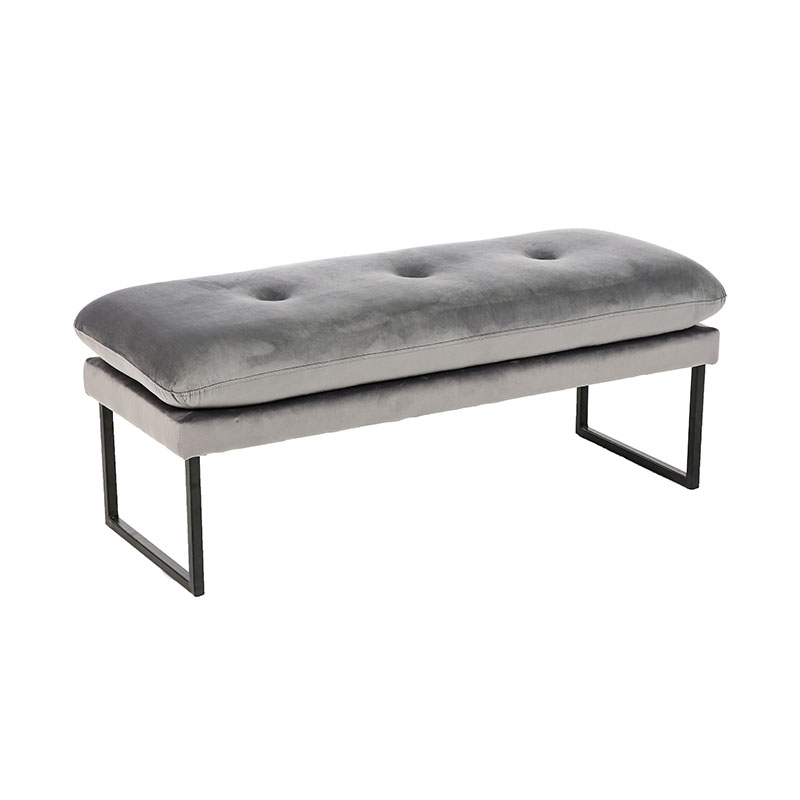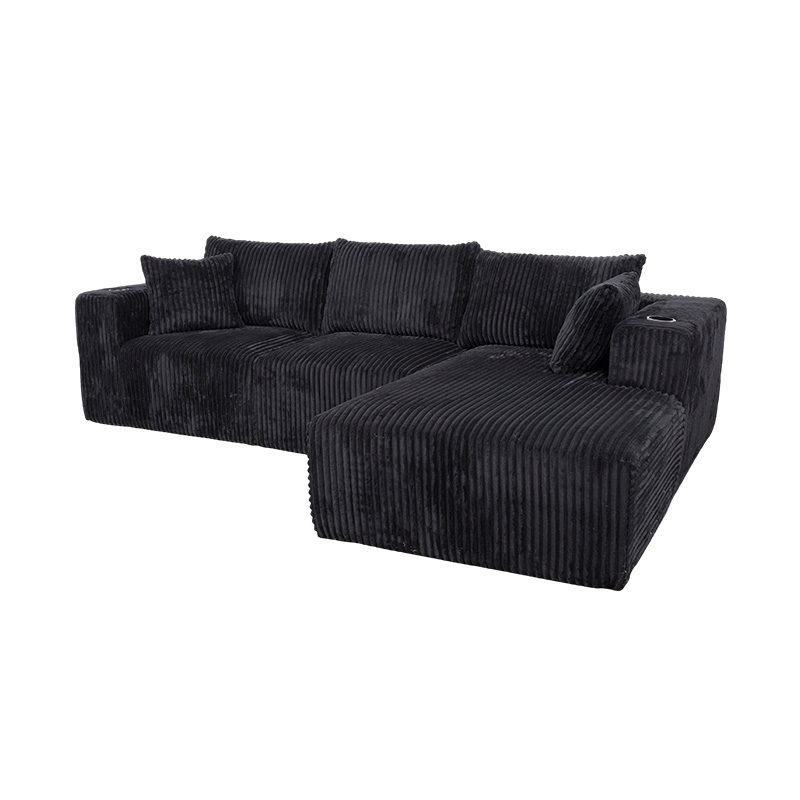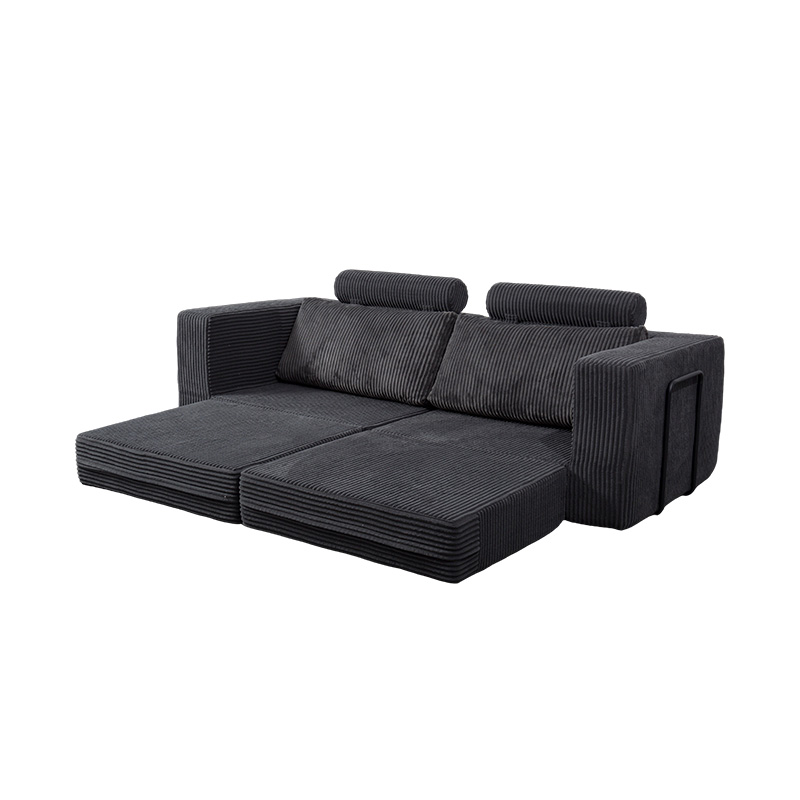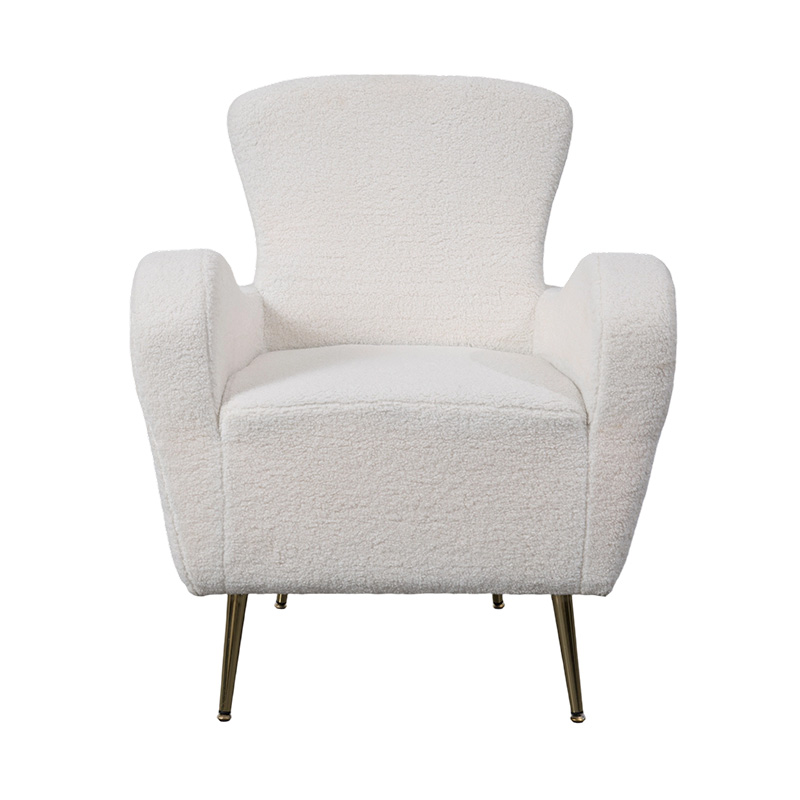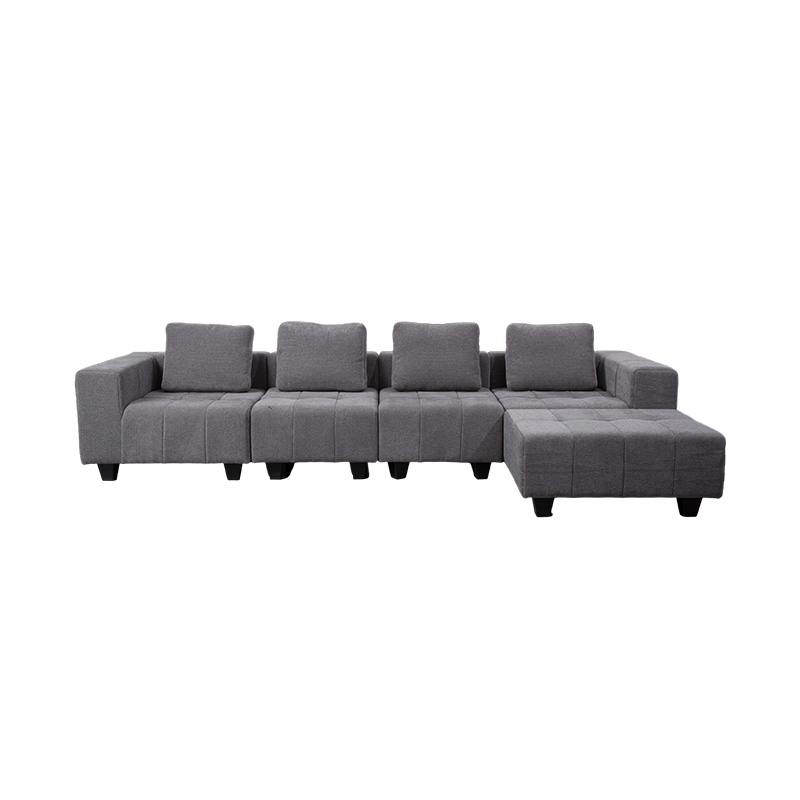The material choice for the upholstery of a storage ottoman plays a critical role in both its durability and aesthetic appeal, influencing how well the piece performs over time and how it complements the overall interior design of a space. Different materials provide varying benefits and challenges, from their ability to withstand wear and tear to their impact on the ottoman's look and feel. Let's delve into how different upholstery materials influence these two key aspects:
Durability
Leather:
Durability: Leather is a highly durable upholstery material, known for its resistance to wear, scratches, and fading. It's particularly suitable for storage ottomans that will be used frequently or in high-traffic areas. Leather naturally ages well, developing a distinctive patina over time that many find appealing. However, it can be prone to cracking or fading if exposed to direct sunlight or moisture for prolonged periods.
Care: While leather is easy to clean and maintain with the proper care, it may require regular conditioning to keep it supple and prevent drying out. Stains or spills should be cleaned promptly to avoid long-term damage.
Fabric (e.g., Linen, Cotton, Velvet):
Durability: The durability of fabric upholstery depends heavily on the type of fabric used. Linen and cotton are natural fibers that tend to be softer and more breathable but may not withstand heavy use as well as synthetic fibers. They can show signs of wear faster, especially in areas prone to friction. Velvet offers a luxurious look but is more prone to crushing and staining than other fabrics.
Synthetic Fabrics (e.g., Polyester, Microfiber): Polyester and microfiber are often chosen for their resilience and low maintenance. These materials are resistant to stains, fading, and pilling, making them ideal for households with pets or children. Microfiber, in particular, is highly durable and soft, while polyester has strong resistance to wear and tear.
Care: Fabric-covered ottomans require regular cleaning to maintain their appearance. Depending on the type of fabric, some materials may need professional cleaning to preserve their integrity.
Faux Leather (Vegan Leather):
Durability: Faux leather has become an increasingly popular choice for those seeking the appearance of leather with a lower cost and ethical considerations. While not as durable as genuine leather, modern faux leather materials are designed to be quite resistant to cracking, fading, and abrasion. However, they may be more vulnerable to damage from sharp objects or excessive moisture.
Care: Faux leather is easy to clean with a damp cloth, and it doesn’t require conditioning like real leather. However, prolonged exposure to heat and sunlight can cause faux leather to dry out and crack.
Wool and Tweed:
Durability: Wool and tweed are both durable and robust materials that can withstand heavy use. Wool’s natural resistance to dirt and staining makes it a great choice for areas with high traffic. Tweed, a woven fabric typically made of wool, has a distinctive texture that adds both durability and a traditional appeal to the ottoman. These fabrics also provide warmth and a cozy feel to the space.
Care: While wool is stain-resistant to some extent, it can require more care than synthetic fibers, especially if it's exposed to liquid spills. Regular vacuuming and professional cleaning are often recommended for wool upholstery to maintain its structure and appearance.
Aesthetic Appeal
Leather:
Aesthetic: Leather offers a sleek, sophisticated look that conveys luxury and timeless style. Whether it's a rich, dark brown or a sleek black, leather upholstery complements both traditional and contemporary interiors. Its smooth texture and glossy finish make it a high-end choice, ideal for both minimalist and industrial-style spaces. Leather can also add warmth and richness to more modern or eclectic settings.
Flexibility: Leather is often used in ottomans designed for upscale, professional, or contemporary living rooms and offices. Its classic appeal also allows it to work well in formal settings or as a statement piece in more casual or industrial rooms.
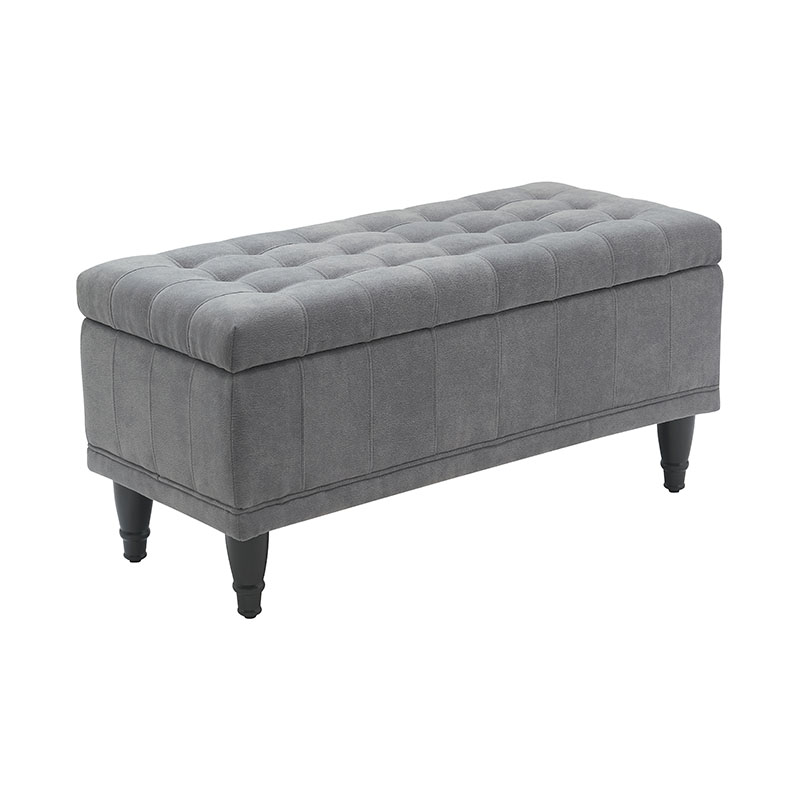
Fabric (e.g., Linen, Cotton, Velvet):
Aesthetic: Fabric upholstery offers a broader range of textures, colors, and patterns, making it ideal for customization to suit various design themes. Linen and cotton give a more natural, relaxed, and casual appearance, perfect for coastal, rustic, or cottage-style interiors. Velvet, on the other hand, adds a touch of luxury and sophistication, with its deep, rich texture that is often associated with traditional or opulent interior designs.
Flexibility: Fabric can be tailored to match a wide range of interior color schemes, from soft neutrals to vibrant hues. The tactile nature of fabric also allows for creative design, such as tufting, piping, and pleating, adding visual interest and depth. Fabric-covered ottomans can blend seamlessly into any room, from modern minimalist settings to more eclectic or bohemian styles.
Faux Leather (Vegan Leather):
Aesthetic: Faux leather gives the appearance of real leather but is available at a lower price point. It offers a similar sleek, polished look to genuine leather but can be more versatile in color and texture. Faux leather is available in a variety of finishes, from matte to glossy, and can provide a contemporary or modern feel depending on the design and color choice.
Flexibility: Faux leather works particularly well in modern, minimalist, and industrial spaces but can also complement more casual or contemporary interiors. It provides a chic, clean look without the maintenance required for real leather, making it a practical aesthetic choice for homes that prioritize ease of care.
Wool and Tweed:
Aesthetic: Wool and tweed have a classic, often vintage or heritage appeal, which gives the ottoman a timeless quality. These fabrics offer an elegant, textured finish, which works well in both formal and casual settings. Tweed, in particular, has a sophisticated and refined look, often found in traditional British-style interiors or spaces with a country-house aesthetic.
Flexibility: Wool and tweed offer a subtle texture that adds depth to the ottoman’s design. The use of patterns (such as houndstooth or plaid) can further enhance the visual appeal, making wool and tweed-covered ottomans a popular choice in traditional, vintage, or eclectic spaces.
Impact on Design Choices
Choosing the Right Material for High-Traffic Areas: In areas that see heavy use—like living rooms, family rooms, or entryways—materials like polyester, microfiber, or faux leather tend to perform well due to their resistance to stains, fading, and wear. These materials ensure that the ottoman remains functional and looks good for longer, even with regular use.
Choosing for a Luxurious Look: For those seeking a more luxurious or sophisticated aesthetic, velvet and leather are ideal choices. Velvet creates a plush, sumptuous feel, often associated with opulent interiors, while leather provides a timeless, high-end look that complements both modern and traditional spaces.
Budget and Maintenance Considerations: If budget is a concern, synthetic fabrics such as polyester and microfiber offer durability at a more affordable price. These fabrics are easy to clean and maintain, making them perfect for homes with children or pets. Faux leather can also be a cost-effective option for achieving the look of leather without the premium price.
Environmental and Ethical Choices: For those concerned with sustainability and ethics, faux leather and eco-friendly fabrics are increasingly popular choices. Many manufacturers now offer upholstery materials made from recycled fibers, organic cotton, and other sustainable sources, providing a more environmentally conscious option without sacrificing durability or design.

 0
0


